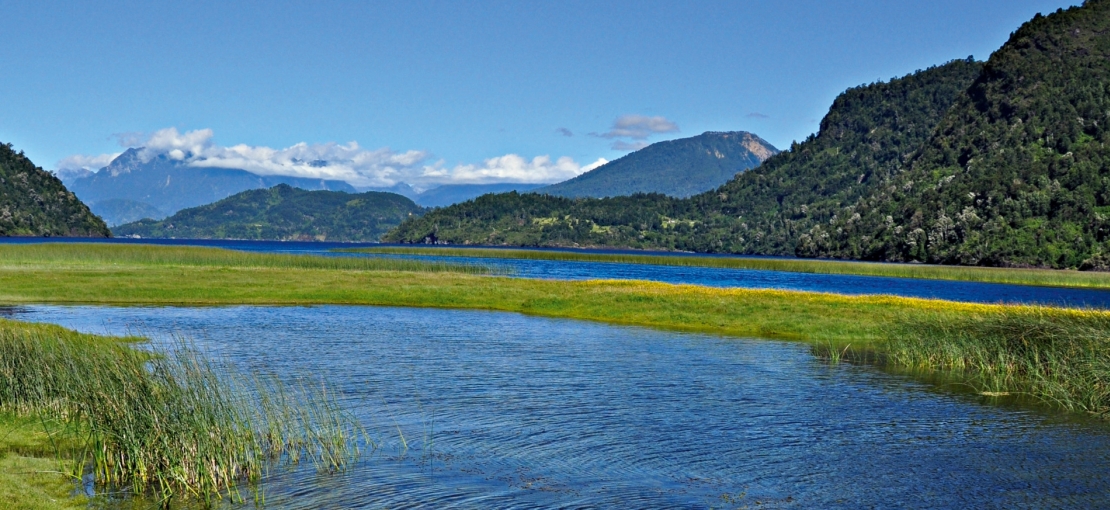
bluesign®: the strictest textile standard worldwide
"Clean" materials manufactured with resource-efficiency
Since 2001, VAUDE has been working with "bluesign® technologies AG". The bluesign® standard is the world's most stringent environmental textile standard for environmental protection and consumer protection. It can be compared to an ecological purity law: only materials that are not a burden humans or the environment are used.
We have set ourselves the goal of making at least 80 percent of our apparel in compliance with bluesign® by 2015. As a bluesign® system partner, our long term goal is that our entire collection is made in accordance with bluesign®.
The aim of bluesign® is maximum resource productivity. bluesign® checks, monitors and optimizes the use of energy, water, raw materials and chemicals throughout the supply chain, as well as supervise emission rates and wastewater, and the handling of hazardous substances in the workplace.
Harmful substance limits lower than those required by law
With "Input Stream Management" bluesign® ensures that only "clean" components are used as resource efficiently as possible. This results in clean, safe and environmentally friendly products.
bluesign® guarantees that no "substances of very high concern" (SVHC) according to the European REACh regulation (Registration, Evaluation, Authorization and Restriction of Chemicals) are contained in the products. In general, limit values for harmful substances in the bluesign® standard are lower than the legal limits and also lower than those of other textile standards.
VAUDE Tettnang-Obereisenbach and our major supplier VAUDE Vietnam are bluesign® audited and ISO 14001 certified.
bluesign® is a component of Green Shape
The bluesign® System is a component of the new VAUDE Green Shape criteria. When a product meets the bluesign® criteria, it is usually given the Green Shape label. One important exception consists of water repellent materials treated with fluorocarbons. The bluesign standard allows the use of C6 technologies. However, the use of fluorocarbons is not allowed for Green Shape products. More info on Green Shape here.
Production process in the supply chain is taken into consideration
bluesign® takes an approach which addresses the problem at its roots. Instead of looking only at the end product and analyzing it, bluesign® is concerned with the entire production process of each individual product component. (fabrics, yarns, chemical substances such as dyes, etc.)
VAUDE Tettnang-Obereisenbach and our important supplier VAUDE Vietnam are bluesign® audited und ISO 14001 certified.
All input and output streams are looked at. Only materials that meet the strict bluesign® criteria make their way into the production cycle.
Over 800 critical substances on the radar
bluesign® limits help protect consumers and the environment and conserve resources. Within the bluesign® standard, over 800 limited or banned substances are monitored. VAUDE took these substances and their limits and created its own Restricted Substance List (RSL).
bluesign® supports us, but also requires further development
bluesign® distinguishes between two quality levels:
- “bluesign® approved fabric”: at least 90 percent of the textile in the product must be bluesign® certified – especially inner and outer materials, and all prints. The remaining ten percent may not have direct contact with the skin and must comply with the criteria and limits of the bluesign® “Restricted Substance List” (RSL) Starting in 2016, this level will no longer exist at bluesign®. All products with the bluesign® label should then fulfill the second level:
- “bluesign® product“: at least 95 percent of the textile in the product must be bluesign® certified – especially inner and outer materials, and all prints. In addition, at least 30 percent of other clothing parts must be bluesign® certified (such as zips, buttons, embroidery). All other components may not come into direct contact with the skin and must comply with the criteria and limits of the bluesign® RSL.
These stricter bluesign® criteria are quite a challenge. At the same time, they raise the bar and inspire the entire industry to even more efforts.
| GRI: | DMA Materials |




